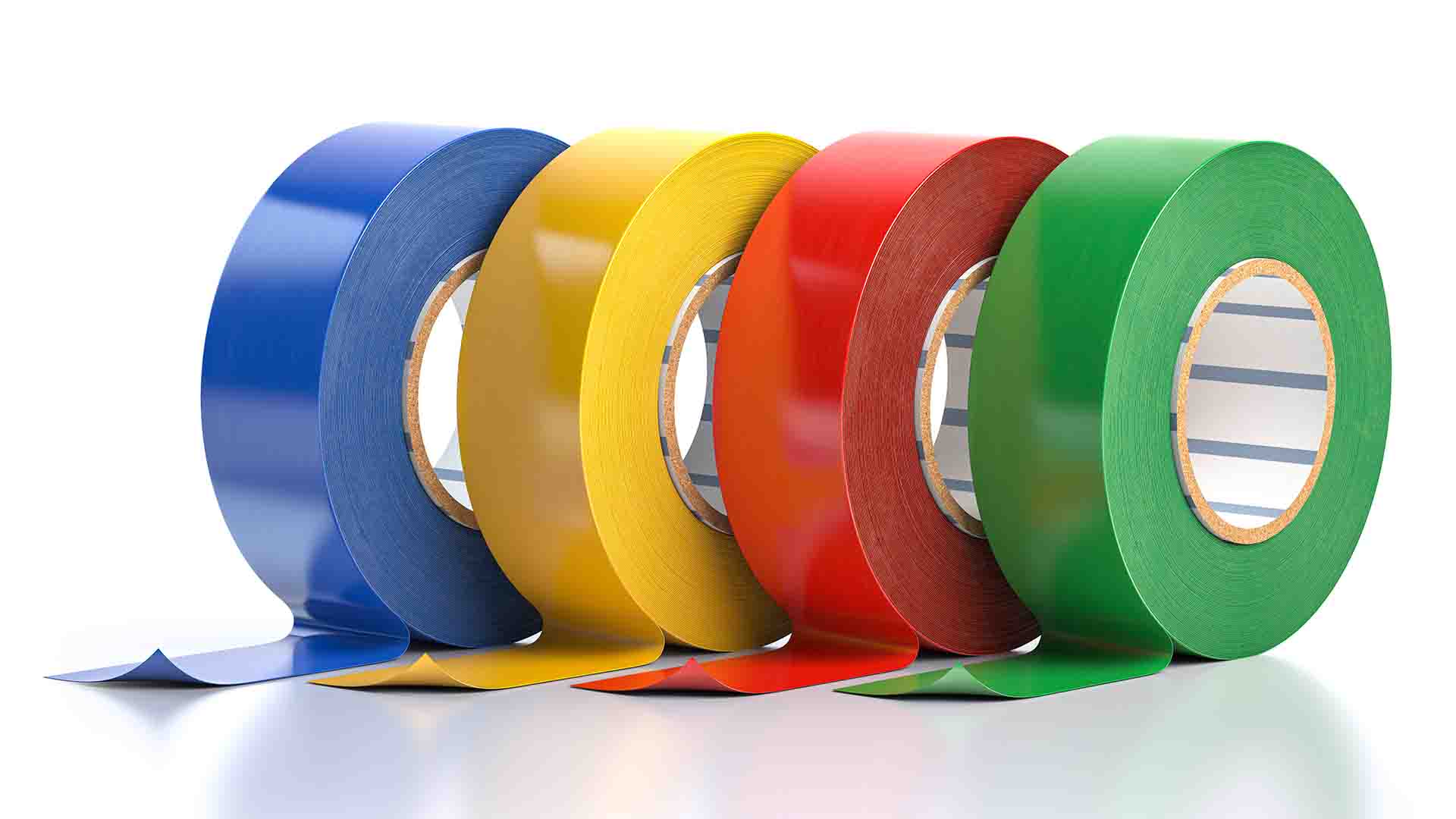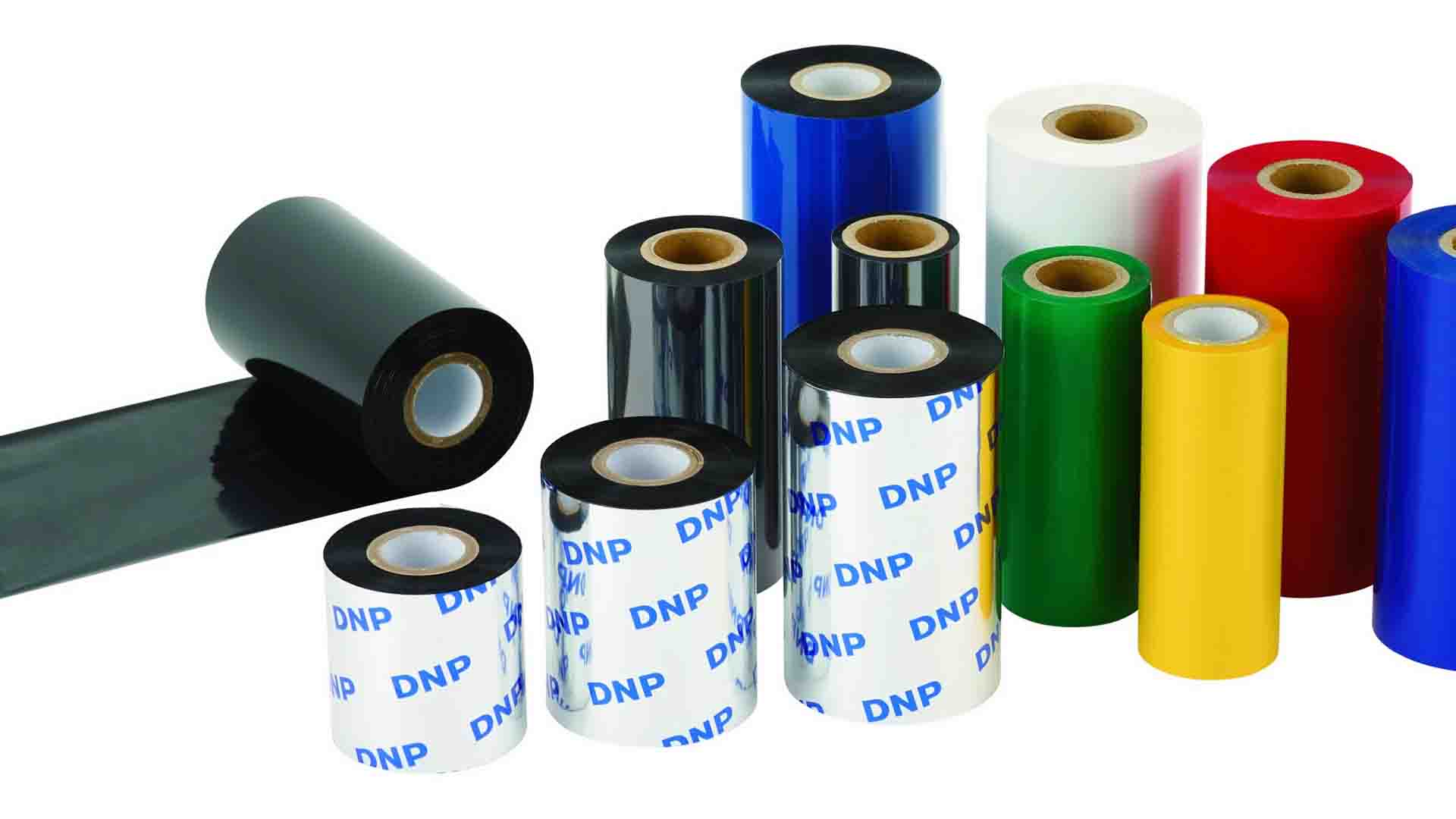

If you want your labels to be clear, resilient and readable from the first scan, it’s not just the printer or the paper that wins the game – the ink ribbons have a big impact. These are thin ribbons with a layer of ink that is transferred by heat from the printer head to the label surface. The right ribbon determines the contrast, resistance to abrasion, chemistry, UV or washing and directly reduces the risk of returns.
When choosing your ribbon, first answer what you are printing on and how much durability you need. For coated or uncoated paper, a universal solution is usually sufficient; for synthetic labels (PP, PE, PET, PVC, polyimide) or textiles, a more resistant formula will be needed. Consider also the type of printer head: flat head for desktop/industrial label printers and near edge solutions for higher speeds or TTO (thermal transfer) on films require specially formulated ribbons. The type of head also determines the optimum energy/speed: for dark, sharp prints, it is not always necessary to “heat to red” – often the right ribbon and the right profile are enough.
Nes mes ne tik tiekiame įrangą ar siūlome sprendimus – mes kuriame vertę, kurią jaučia Jūsų verslas kiekviename žingsnyje.
UAB „Vygėja“ – tai patikimas partneris, kuriam rūpi ne tik rezultatas, bet ir Jūsų kelias link jo.
When it comes to cost, the cheapest tape is not always the cheapest system. If you are printing warehouse labels, wax will cover 80-90% of your daily routine. However, if after a week the synthetics show scuffs or the codes are unreadable after washing, the real cost goes up due to reprints and returns. The typical sequence is: paper – wax, coated paper / some synthetics – wax – resin, synthetics / chemistry / sterilisation – resin. If you are working with TTO on films, choose dedicated resin or wax-resin formulations that maintain a sharp impression under constant movement.

If you print paper labels and speed and low cost are important to you, wax ink ribbon (TTR wax) is often the right choice. Designed to work on uncoated or coated paper, it is ideal for logistics, warehousing, e-commerce shipments, price and shelf labels where a clear barcode or 2D code is essential but the coating will not be exposed to aggressive environments. Wax tape transfers bright, contrasting print even at higher conveyor speeds, without the extra cost of expensive synthetic labels or high impact tapes.
Where the label lives indoors and needs to remain readable for several days to several months – for example, picking stickers, consignment tags, internal production cards, temporary warehouse location labels. Second, when the surface is paper or corrugated cardboard: the wax pigment embeds itself in the fibre and gives a dark impression without ‘bleeding’. Third, when the lowest cost per label and high print speeds are the priority: most desktop and industrial flat-head printers with wax ribbon are fast, and by optimising thermal energy you can achieve excellent contrast without spilling the head.
Important to know. Wax is not designed for extreme conditions: if you will be washing, rubbing, sterilising, storing the label outdoors in the sun or exposed to chemicals, you are better off with wax-resin or resin tape. The same applies to synthetic labels (PP, PE, PET, polyimide): the wax layer on these labels is less adhesive and will not guarantee durability. If the label will be running on rough conveyors, in contact with grease or solvents, the wax will quickly show its weaknesses – this is where a higher grade tape is needed.

If paper labels are already lacking in durability and you don’t want to go to “pure” resin yet because of cost or excess resistance, wax-resin tape is the middle ground that usually “hits the mark”. It prints brightly and cleanly, but at the same time offers greater resistance to scratching, condensation and some chemicals than plain wax. In practice, this means fewer reprints, less barcode readability and more reliable labels throughout the logistics chain.
Where is it strongest?
Where the label is exposed to more mechanics or moisture than usual: boxes that move along conveyors and rub together; refrigerated or chilled areas where condensation forms; cosmetics and household chemical packaging that may contain traces of grease or detergents; internal production labels that travel through multiple workshops, handling and storage. In these situations, the wax-resin impression remains contrasting and does not fade as quickly as wax.
Which label materials to combine with?
Coated (semi-gloss, glossy) paper is a classic combination, as its top layer strengthens the print and gives it a smooth finish. Most synthetics (PP, PE, PET) are equally suitable when maximum resin endurance is not required. If the label substrate is very rough or not coated at all, you can still squeeze out the quality with a suitable heat/speed profile, but coated paper or thin synthetics will give a cleaner edge and a better gradation of 1D/2D codes.
When to choose it instead of resin?
When you want better price per unit and higher print speeds, and the required robustness is sufficient for “everyday industrial and logistics life”. Resin ribbon is the “armour” you don’t always need; wax-resin is the “strong all-rounder” that covers most real-world scenarios without making the system more expensive. If you print a lot today on coated paper and some PP, and tomorrow you’re planning to move to more synthetics or a little more stringent conditions, wax-resins are a great intermediate step without changing the printer.

Resin strips: maximum resistance to chemicals, UV and abrasion
If your labels need to withstand washing, disinfection, sunlight and daily mechanical abrasion, resin TTR is the right solution. Unlike wax or wax-resin blends, the resin pigment is thermally “melted” into the surface layer to form a very dense, durable print. In practice, this means that barcodes and 2D codes remain readable after warehouse conveyors, transport, UV exposure or contact with cleaning agents – where cheaper tapes have already “given up”.
Where does resin show its superiority?
On synthetic labels: PP, PE (with topcoat), PET, PVC, polyimide (Kapton) and polyester. Typical areas where chemical and thermal resistance is required are automotive and industrial parts, electronics labelling, laboratory and medical labels (including autoclaving ~121 °C), cosmetic and household chemical packaging, field and warehouse logistics labels, drum/chemical labelling (GHS), textile care labels that survive washing and drying. Resin printing also “holds up” best on films and laminated surfaces, making it suitable for labels with small information or high-quality logos that cannot smudge.
Chemical and UV resistance is the essential strength of the resin film. A correctly selected formula can withstand alcohol (IPA), petrol, oils, cleaning agents, and in some cases acetone or MEK, and the stamp will not deteriorate from repeated “thumb rubbing” or brushing in warehouse conditions. For outdoor projects, it is important that the resin pigment does not fade from UV, and if the coating is constantly exposed to the sun or water, you can further increase its resistance by choosing a UV-stable label backing and adhesive, and a thin lamination if necessary. This combination often makes resin tape the choice when meeting durability standards (e.g. for marine chemical drum labels or long life equipment).
